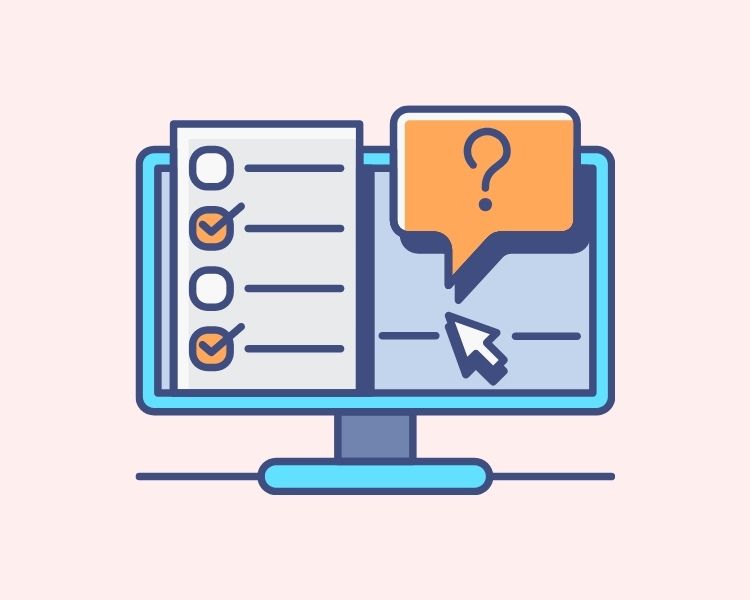
Introduction
In today’s digital era, having a robust online presence is crucial for the success of any business. This comprehensive guide on web marketing services aims to provide a thorough understanding of what web marketing entails, its significance, and how businesses can leverage it to enhance their online presence and achieve their marketing goals. Whether you are a SaaS company, an agency, a freelancer, or a creator, this guide will help you navigate the complex landscape of web marketing services.
What Are Web Marketing Services?
Web marketing services encompass a variety of strategies and techniques used to promote businesses, products, or services online. These services include search engine optimization (SEO), pay-per-click (PPC) advertising, social media marketing, content marketing, email marketing, and more. The goal is to drive traffic to your website, engage your target audience, and convert visitors into customers.
Why Are Web Marketing Services Important?
Web marketing services are essential because they allow businesses to reach a wider audience, build brand awareness, and generate leads. With more people using the internet to find products and services, having a strong online presence is vital for staying competitive. Effective web marketing can also enhance customer engagement and loyalty, leading to increased sales and business growth.
Key Components of Web Marketing Services
1. Search Engine Optimization (SEO)
SEO involves optimizing your website to rank higher in search engine results pages (SERPs). This is achieved through keyword research, on-page optimization, technical SEO, and link building. SEO helps increase organic traffic to your website, making it easier for potential customers to find you online.
Tips for Effective SEO:
- Conduct Thorough Keyword Research: Understand what your target audience is searching for. Tools like Google Keyword Planner and SEMrush can help identify relevant keywords.
- Optimize Website Content: Use relevant keywords in your website’s content, meta tags, and images to improve visibility in search results.
- Improve Site Speed and Mobile Responsiveness: A fast, mobile-friendly website enhances user experience and improves SEO rankings.
- Build High-Quality Backlinks: Obtain backlinks from reputable websites to increase your site’s authority and search engine ranking.
2. Pay-Per-Click (PPC) Advertising
PPC advertising involves placing ads on search engines or social media platforms and paying a fee each time someone clicks on your ad. Google Ads and Facebook Ads are popular PPC platforms. PPC allows you to target specific keywords and demographics, providing immediate visibility and driving targeted traffic to your website.
Benefits of PPC Advertising:
- Instant Traffic: Unlike SEO, which takes time to show results, PPC ads can drive traffic to your site immediately.
- Measurable Results: You can track the performance of your ads in real-time and make data-driven decisions.
- Targeted Audience: PPC allows you to target your ads based on location, demographics, interests, and more, ensuring that your ads reach the right people.
3. Social Media Marketing
Social media marketing involves using platforms like Facebook, Instagram, Twitter, and LinkedIn to promote your business. It helps in building brand awareness, engaging with your audience, and driving traffic to your website.
Effective Social Media Strategies:
- Create Engaging Content: Share content that resonates with your audience, such as informative articles, entertaining videos, and eye-catching images.
- Use Paid Social Media Ads: Extend your reach by using targeted ads on social media platforms.
- Engage with Followers: Respond to comments and messages promptly to build a community and foster loyalty.
- Analyze Social Media Metrics: Track engagement, reach, and conversion metrics to understand what works and adjust your strategy accordingly.
4. Content Marketing
Content marketing focuses on creating and distributing valuable, relevant, and consistent content to attract and retain a clearly defined audience. It helps in establishing authority, building trust, and driving organic traffic to your website.
Types of Content Marketing:
- Blog Posts: Regularly publishing informative and engaging blog posts can drive traffic and improve SEO.
- Videos: Videos are highly engaging and can be used to explain complex topics, showcase products, or share customer testimonials.
- Infographics: These visually appealing graphics can simplify complex information and are highly shareable.
- E-books and Whitepapers: Offering in-depth content on specific topics can help generate leads and establish your expertise.
5. Email Marketing
Email marketing involves sending targeted messages to your subscribers to nurture leads, build relationships, and drive conversions. It is one of the most cost-effective marketing strategies with a high return on investment (ROI).
Effective Email Marketing Tactics:
- Segment Your Email List: Categorize your subscribers based on their interests and behavior to deliver personalized content.
- Craft Compelling Subject Lines: Use attention-grabbing subject lines to increase open rates.
- Include Clear CTAs: Encourage recipients to take action by including clear and concise calls-to-action.
- Monitor Email Metrics: Track open rates, click-through rates, and conversions to optimize your campaigns.
Integrating Web Marketing Services
To maximize the effectiveness of your web marketing efforts, it’s essential to integrate various strategies and create a cohesive marketing plan. Here are some steps to achieve this:
1. Define Your Goals:
Identify what you want to achieve with your web marketing services. Common goals include increasing website traffic, generating leads, boosting sales, and improving brand awareness.
2. Understand Your Audience:
Conduct market research to understand your target audience’s needs, preferences, and online behavior. This will help you tailor your marketing strategies to meet their expectations.
3. Develop a Content Strategy:
Create a content calendar outlining the type of content you will produce, the platforms you will use, and the frequency of posting. Ensure your content is aligned with your audience’s interests and your marketing goals.
4. Leverage Analytics:
Use analytics tools like Google Analytics, SEMrush, and social media insights to track the performance of your marketing efforts. Analyzing data will help you identify what works and what doesn’t, allowing you to refine your strategies for better results.
5. Continuously Optimize:
Web marketing is an ongoing process. Continuously optimize your strategies based on the data and feedback you receive. Stay updated with the latest trends and best practices in web marketing to stay ahead of the competition.
Advanced Web Marketing Techniques
As you become more proficient in web marketing, you can explore advanced techniques to further enhance your online presence and drive better results. Here are some advanced strategies to consider:
1. Conversion Rate Optimization (CRO)
CRO involves optimizing your website to increase the percentage of visitors who complete a desired action, such as making a purchase or filling out a contact form. This can be achieved through A/B testing, improving website usability, and enhancing the overall user experience.
CRO Best Practices:
- Use Clear and Compelling CTAs: Make sure your calls-to-action are easy to understand and stand out.
- Simplify Navigation: Ensure that your website is easy to navigate and that users can find what they’re looking for quickly.
- Test Landing Page Designs: Experiment with different designs and content to see what converts best.
- Leverage Social Proof: Use customer reviews and testimonials to build trust and credibility.
2. Marketing Automation
Marketing automation uses software to automate repetitive marketing tasks, such as email campaigns, social media posting, and lead nurturing. This allows you to save time, increase efficiency, and deliver personalized experiences to your audience.
Benefits of Marketing Automation:
- Streamlined Processes: Automation helps you manage multiple marketing tasks efficiently.
- Personalized Communication: Deliver tailored messages based on user behavior and preferences.
- Improved Lead Management: Track and nurture leads throughout the sales funnel effectively.
3. Influencer Marketing
Influencer marketing involves partnering with influencers in your industry to promote your products or services. Influencers have a large following and can help you reach a broader audience, build credibility, and drive sales.
Tips for Successful Influencer Marketing:
- Choose the Right Influencers: Select influencers whose audience aligns with your target market.
- Collaborate on Authentic Content: Work with influencers to create content that showcases your product’s benefits genuinely.
- Measure Campaign Performance: Track metrics such as engagement, reach, and conversions to evaluate the success of your influencer campaigns.
4. Video Marketing
Video marketing involves using videos to promote your brand, products, or services. Videos are highly engaging and can effectively convey complex information in a short amount of time.
Video Marketing Strategies:
- Create How-To Videos: Educate your audience about your products with step-by-step tutorials.
- Share Customer Testimonials: Build trust by showcasing positive experiences from your customers.
- Use Live Videos: Engage with your audience in real-time through live streaming on platforms like Facebook and Instagram.
- Optimize for SEO: Include relevant keywords in your video titles, descriptions, and tags to improve search rankings.
5. Remarketing
Remarketing involves targeting users who have previously visited your website but did not convert. By displaying targeted ads to these users as they browse other websites, you can remind them of your offerings and encourage them to return and complete a purchase.
Remarketing Best Practices:
- Segment Your Audience: Deliver personalized ads based on user behavior and past interactions.
- Create Compelling Ad Creatives: Highlight the benefits of your products and include strong CTAs.
- Set Frequency Caps: Avoid overwhelming users with too many ads by setting limits on how often they see your ads.
Measuring the Success of Web Marketing Services
To ensure your web marketing efforts are effective, it’s crucial to measure and analyze the results. Here are some key metrics to track:
1. Website Traffic:
Monitor the number of visitors to your website and identify the sources of traffic, such as organic search, paid ads, social media, and email campaigns.
2. Conversion Rate:
Track the percentage of visitors who complete a desired action on your website. This could be making a purchase, filling out a contact form, or subscribing to your newsletter.
3. Cost Per Acquisition (CPA):
Calculate the cost of acquiring a new customer through your marketing efforts. This helps you determine the efficiency and ROI of your campaigns.
4. Return on Investment (ROI):
Measure the overall return on your marketing investments by comparing the revenue generated to the cost of your marketing efforts.
5. Engagement Metrics:
Analyze metrics such as bounce rate, average session duration, and pages per session to understand how users interact with your website and identify areas for improvement.
Conclusion
Web marketing services are essential for businesses looking to succeed in the digital age. By leveraging strategies like SEO, PPC advertising, social media marketing, content marketing, and email marketing, you can enhance your online presence, engage your audience, and drive conversions. Remember to continuously optimize your efforts based on data and stay updated with the latest trends to stay ahead of the competition.



